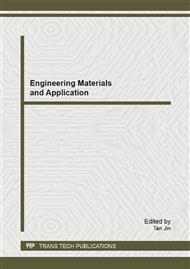[1]
G. Stiny (1997) Ice-ray: a note on the generation of Chinese lattice designs. Environ Plann B: Plan Des 4: 89–98.
DOI: 10.1068/b040089
Google Scholar
[2]
J. K. Gershenson, G. J. Prasad & Y. Zhang (2003): Product modularity: Definitions and benefits, Journal of Engineering Design, 14: 3, 295-313.
DOI: 10.1080/0954482031000091068
Google Scholar
[3]
E. R. Deciu, E. Ostrosi, M. Ferney et M. Gheorghe (2005) Configurable product design using multiple fuzzy models. Journal of Engineering Design 16(2): 209-235.
DOI: 10.1080/09544820500031526
Google Scholar
[4]
D. Krstic (2004) Computing with analyzed shapes. In: Gero JS (ed) Design computing and cognition'04. Kluwer Academic, Dordrecht, 397–416.
DOI: 10.1007/978-1-4020-2393-4_21
Google Scholar
[5]
N. Suh (1990) Principles of Design. Oxford University Press, New York.
Google Scholar
[6]
E. R. Gansner and S. North, An Open Graph Visualization system and its Applications to Software Engineering, Software - Practice & Experience 30, 1203–1233, 2000. Also, www. graphviz. org.
DOI: 10.1002/1097-024x(200009)30:11<1203::aid-spe338>3.0.co;2-n
Google Scholar
[7]
B. R. Meljer, T. Tomlyama, B.H.A. van der Hoist, K. van der Werff Knowledge Structuring for Function Design, CIRP Annals - Manufacturing Technology, Volume 52, Issue 1, 2003, Pages 89–92.
DOI: 10.1016/s0007-8506(07)60538-1
Google Scholar
[8]
K. Ulrich (1995) The role of product architecture in the manufacturing firm. Res Policy 24: 419–440.
Google Scholar
[9]
J. Hirtz, R. B. Stone, D. A. McAdams, S. Szykman, K. L. Wood. A functional basis for engineering design: reconciling and evolving previous efforts. Res Eng Des 2002; 13: 65–82.
DOI: 10.1007/s00163-001-0008-3
Google Scholar
[10]
R. B. Stone, K. L. Wood, R. H. Crawford (2000) A heuristic method for identifying modules for product architectures. Des Stud 21: 5–31.
DOI: 10.1016/s0142-694x(99)00003-4
Google Scholar


